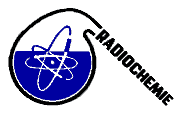Speaker
Ms
Catarina Galinha
(CERENA-IST, Technical University of Lisbon)
Description
The increasing attention paid to the role of selenium (Se) and selenoproteins in human health stems from an equally growing body of evidence on their actual (general) importance for a healthy immune system, and on their protective (specific) effects against cardiovascular disease, asthma, male sterility, and, especially, certain forms of cancer. The current Recommended Dietary Allowance (RDA) for adult men and women (> 14 y) is 55 μg of the element per day. The Portuguese situation is hard to assess due to scarce information and lack of consistent studies on this subject, though unlikely to differ much from Europe at large, where falls in Se intake - and corresponding drops in blood indicators of Se status - have raised a widespread concern. In these terms, an extensive investigation of Se levels in cereals and their cultivation soils is being carried out across the main production areas of mainland Portugal, with a view to an eventual Se-biofortification of major cultivars (under research contract PTDC/QUI/65618/2006; FCT-MCTES, Portugal). Total Se is assessed by instrumental neutron activation analysis (INAA), through short irradiations on the fast pneumatic system (SIPRA) of the Portuguese Research Reactor (RPI-ITN), with an acquisition system by ORTEC - a DSPEC Pro digital γ-ray spectrometer and a liquid-nitrogen-cooled, high-purity-germanium detector (HPGe), connected to a 4096 multi-channel analyser. The short-lived nuclide 77mSe, that features a half-life time of 17.5 s, is used to determine the Se content in SIPRA. Full optimisation of the procedure for Se determination is still ongoing. Still, several tests on the SIPRA with the reference materials NIST-SRM 1567a (Wheat Flour) and NIST-SRM 1568a (Rice Flour) have been yielding results that are quite satisfactory already. Reference samples have been put through cyclic neutron activation analysis (CNAA), at a flux of 2.6x1016 neutrons per square meter and second. The number of cycles for each sample was 15, with both irradiation and counting times of 20 s, and a decay time of 5 s. Three replicate samples of 80-110 mg (in polyethylene capsules) have been used for each reference material; concentrations were determined by the relative method. This paper is focused on wheat samples - soft (bread) and durum wheat; Triticum aestivum L. and Triticum durum L., respectively - from the 2009 campaign, and discusses the Se distribution in grains and other parts of wheat plants (roots, leaves), toward an eventual supplementation of the element in different growth stages. A few other experiments with the Chinese soil standards GBW07404 (NRCCRM Soil NCS DC 73322) and GBW07406 (NRCCRM Soil NCS DC 73324), as well as with rye roots and soils from rye fields, were not that conclusive due to a very high activity of the samples. Such tests will be repeated with the DSPEC Pro in lieu of the DSPEC jr, since the latter does not properly account for counting losses.
Primary authors
Prof.
Adriano Pacheco
(CERENA-IST, Technical University of Lisbon)
Ms
Catarina Galinha
(CERENA-IST, Technical University of Lisbon)
Dr
Maria do Carmo Freitas
(URSN-ITN, Technological and Nuclear Institute)

